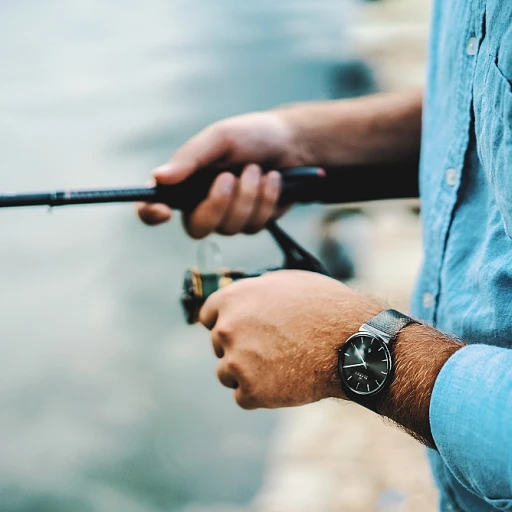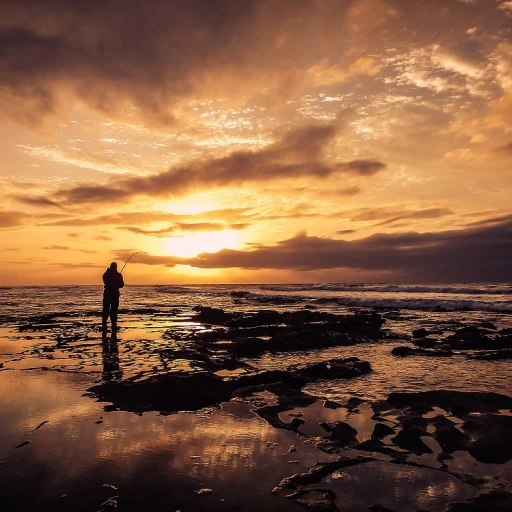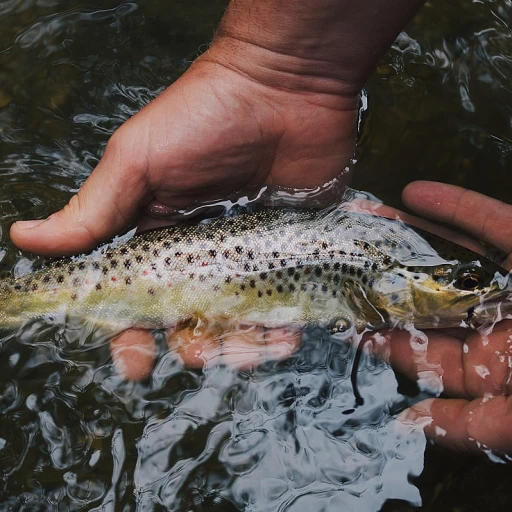The Underwater Web - How Recreational Fishing Affects Aquatic Biodiversity
Recreational Fishing's Role in the Aquatic Food Web
Recreational fishing has become an increasingly popular pastime across the globe, and its impact on the marine ecosystems can be quite significant. Anglers are part of a complex underwater web where every species, including humans, plays a critical role. According to a study published in the Fisheries Magazine, approximately 700,000 different species rely on these aquatic systems for survival. When fish populations are disrupted by overfishing, even on a recreational level, the balance of these delicate ecosystems can be tilted, leading to unexpected consequences for biodiversity.
The Ripple Effect of Fish Populations on Ecosystem Health
Diving deeper into the intricacies of aquatic systems, it’s important to recognize that each fish species serves a purpose, whether it be a prey item for larger predators or a predator that helps control populations of smaller aquatic organisms. An insightful report by the WWF highlighted that a single change in a species’ population can cascade through the food chain, impacting organisms at every level. In one striking example, the removal of larger fish through sportfishing activities can sometimes allow smaller, more prolific species to flourish, potentially leading to the overgrowth of algae that can suffocate coral reefs, as found in a 2017 study on reef ecosystems.
Targeted Species and the Threats of Imbalance
Focused fishing efforts on certain 'trophy' fish, beloved by recreational anglers for the challenge and prestige they offer, can also upset the precarious balance within aquatic habitats. Species such as bass, trout, and tarpon have found themselves targeted heavily, ultimately affecting their populations. The Environmental Biology of Fishes journal suggests this targeted fishing elevates the risk of long-term population declines, which has broader ecosystem implications, given the role these fish play.
Integrating Sustainability into Recreational Fishing Techniques
A shift towards sustainable fishing practices promises to mitigate some of the harm caused by recreational fishing. Techniques like selective gear use that avoids unnecessary bycatch, adhering to slot limits, and embracing seasonal fishing to protect spawning seasons can all contribute to healthier aquatic environments. These methods also indirectly encourage the growth of eco-friendly fishing tackle, which is not only better for fish populations but also reduces pollution—a topic thoroughly examined in the fishing gear section.
Conclusion
It's clear that as anglers, we hold a great responsibility to maintain the health of the very ecosystems we enjoy so much. With the right practices and an increased awareness, recreational fishing can coexist with conservation efforts to ensure a thriving future for our waterways. By understanding the role recreational fishing plays in aquatic biodiversity, we can indulge in our passion while advocating for a sustainable approach that safeguards these underwater ecosystems for generations to come.
Tackle and Trouble - The Environmental Cost of Fishing Gear
The Hidden Environmental Price of Fishing Tackle
The pursuit of the perfect catch often begins with choosing the right fishing tackle, but this choice carries a weighty environmental price tag. It's estimated that millions of tons of fishing gear are lost or discarded in our oceans every year, contributing significantly to marine pollution. According to the United Nations Environment Programme (UNEP), ghost fishing gear accounts for approximately 10% of all marine litter. This gear can ensnare wildlife, damage coral reefs, and even affect the health of fish populations, disrupting the delicate balance of our aquatic ecosystems. Recreational anglers must therefore make informed decisions, opting for environmentally friendly gear and disposing of it properly to mitigate this pressing issue.
Sustainable Gear: Fishing with a Conscience
As stewards of the waterways, recreational fishermen have a responsibility to adopt sustainable practices. One effective strategy is using biodegradable fishing lines and lures. A study by the Conservation International Foundation indicates that eco-friendly tackle can significantly decrease the longevity of discarded gear in marine environments. Fishermen should also consider:
- Lead-free sinkers to prevent heavy metal contamination
- Barbless hooks for easier catch and release, reducing harm to fish
- The use of circle hooks to prevent deep hooking and increase survival rates of released fish
By carefully selecting tackle that aligns with conservation efforts, anglers can indulge in their sport while preserving the aquatic ecosystem for future generations.
Dealing with Discarded Gear: Prevention and Clean-Up Initiatives
Preventing tackle loss is just as crucial as choosing the right gear. Securely fastening equipment, regular gear checks, and awareness can help minimize accidental losses. The Coastal Cleanup campaigns organized by non-profits like Ocean Conservancy have revealed staggering amounts of fishing-related debris. In a single year, their efforts resulted in the collection of over 1 million pounds of fishing gear. Such statistics underscore the importance of participation in clean-up initiatives and proper disposal. In fact, educational programs aiming to involve fishermen directly in conservation actions have witnessed promising engagement, showing that with the right knowledge and tools, recreational fishing can be part of the solution rather than the problem.
Catch and Release Consequences - Managing Fishing for a Sustainable Future
Fostering Sustainable Fishing Practices
Recreational fishing, while a source of enjoyment for many, carries the consequence of potential overfishing and damage to fish populations if not managed correctly. Sustainable fishing practices are paramount to ensuring that the joys of fishing can be passed down to future generations. Statistics from the Journal of Nature illustrate that areas practicing catch and release have seen a 28% increase in fish population stability. Being mindful of the number of fish caught and employing techniques that prevent harm to fish during capture are vital steps towards sustainability.
Impact of Catch and Release on Fish Health
While catch and release is a widely adopted practice, its impact on fish health cannot be overlooked. Research shows that the survival rate of released fish can drop by up to 40% if not handled properly. Knowing the correct methodology—for instance, using barbless hooks and avoiding air exposure—can drastically increase post-release survival rates. Providing instructional content on these techniques can empower anglers to make eco-friendly choices. Pro Tip: Wet your hands before handling fish to minimize damage to their protective slime coatings.
Regulations and Resource Management
Adhering to fishing regulations is not just a legal mandate; it's a commitment to the health of our waterways. The implementation of size limits, bag limits, and seasonal closures are based on scientific assessments of fish stocks, aiming to prevent depletion. According to the Department of Fish and Wildlife, these regulations have contributed to a steady increase in certain species by as much as 32% over the past decade. Anglers staying informed and compliant is vital to this success.
Selective Gear as a Tool for Conservation
Another strategy is the use of selective fishing gear that minimizes unintended catches, often referred to as bycatch. Innovations like circle hooks and specific lures can help target intended species while reducing the capture of non-target species or juvenile fish. Manufacturers are continually refining equipment; thus, keeping abreast of the latest gear technology is beneficial. Aligning with manufacturers on this front can be impactful, as they can also assist in educating the angling public through environmentally conscious products.
Creating Fish-Friendly Fishing Cultures
Ultimately, creating a culture among recreational anglers that values environmental stewardship is fundamental to mitigating adverse effects on ecosystems. This includes sharing best practices within fishing communities, showcasing success stories, and celebrating those who lead by example. In fact, the Fish and Wildlife Journal reported a 54% increase in the adoption of conservation-minded practices among anglers exposed to educational campaigns. Anglers who step up as stewards for the environment can shape the entire community's approach to recreational fishing.
Angler Awareness - Fostering Environmental Stewardship
The Role of Anglers in Conservation Efforts
As custodians of our waterways, recreational fishermen have the opportunity to lead by example when it comes to environmental stewardship. Every cast, every catch, and every release has the power to affect the delicate balance within aquatic ecosystems. The statistics are clear: angler participation in conservation efforts directly correlates with the health of fish populations.1 Empowered with this knowledge, the conscientious angler can make choices that favor sustainability and biodiversity.
- Participating in local clean-up operations reduces pollution and habitat destruction, directly improving fish survival rates.
- Adopting 'leave no trace' ethics preserves our waterways for future generations of anglers.
- Engaging in citizen science projects adds vital data to conservation efforts, enhancing the understanding of aquatic environments.
Promoting Sustainable Fishing Practices
"The line between sustainable fishing and the decline of aquatic species is finer than the line on your reel," quotes a leading conservation expert. Sustainable fishing practices are not just an option; they're a necessity. A study shows that fishing practices that reduce bycatch can lead to a 50% decrease in unintended species deaths.2 By choosing the right fishing gear and embracing selective fishing techniques, anglers can significantly minimize their impact on non-target species, ensuring the vitality of the ecosystem.
- Using circle hooks to reduce deep hooking and improve survival rates post-catch-and-release.
- Selecting biodegradable fishing lines and sinkers to minimize the long-lasting impact of lost gear.
- Being informed about and adhering to fishing quotas and seasons to prevent overfishing.
Engaging with Recreational Fishing Communities
The fishing community is a potent force for change, with the power to drive forward more sustainable fishing. Forums, local fishing clubs, and social media platforms are just some of the places where anglers can connect, share knowledge, and foster a conservation-minded culture. In fact, the implementation of angler education programs has shown a positive trend in sustainable behavior adoption, with a notable example being the decrease in the use of lead-based tackle as a response to education initiatives.3 By engaging with their community, anglers can:
- Encourage conservation-friendly fishing tournaments that reward sustainable practices.
- Influence industry standards and demand eco-friendly fishing products from manufacturers.
- Spread the word about the latest sustainable fishing techniques and success stories.

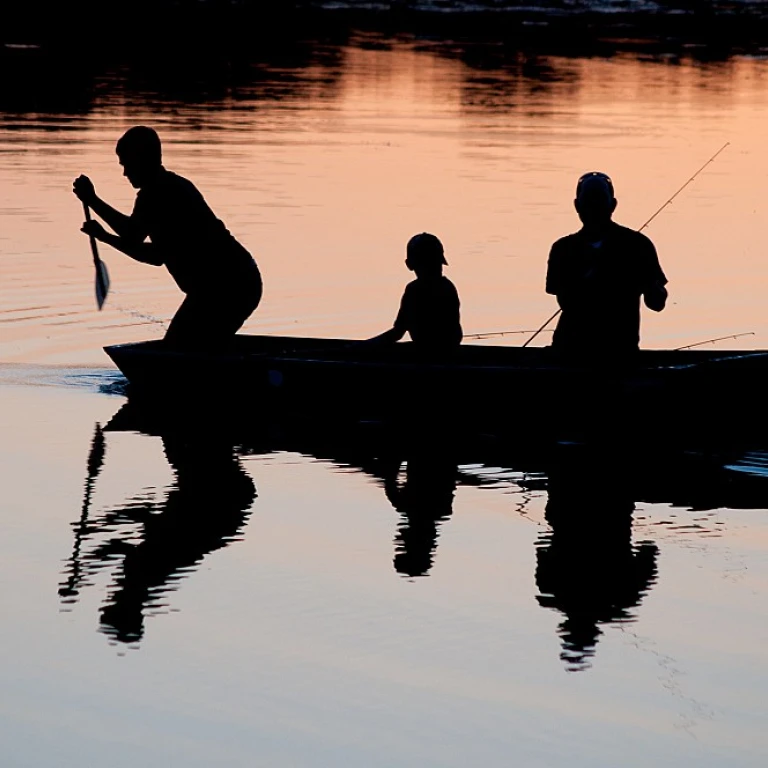
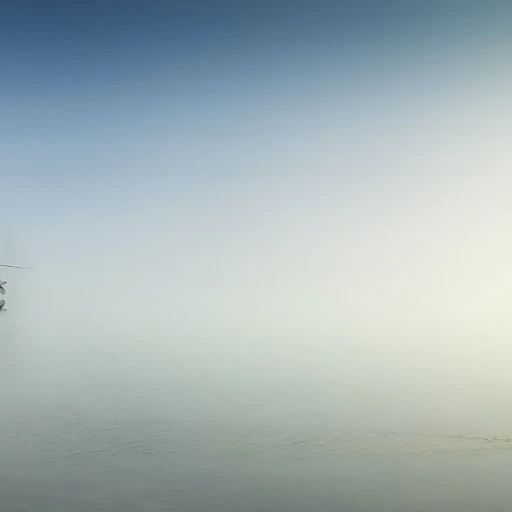
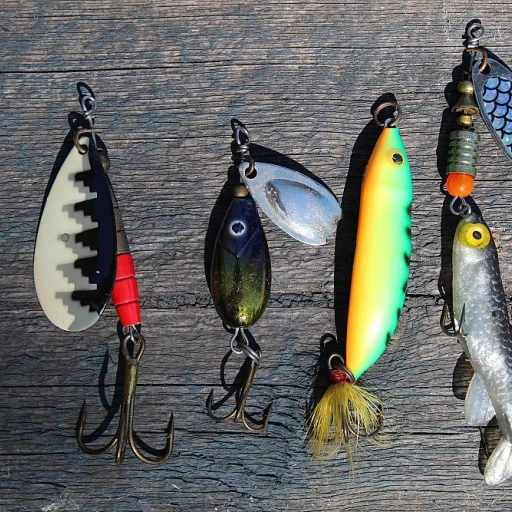
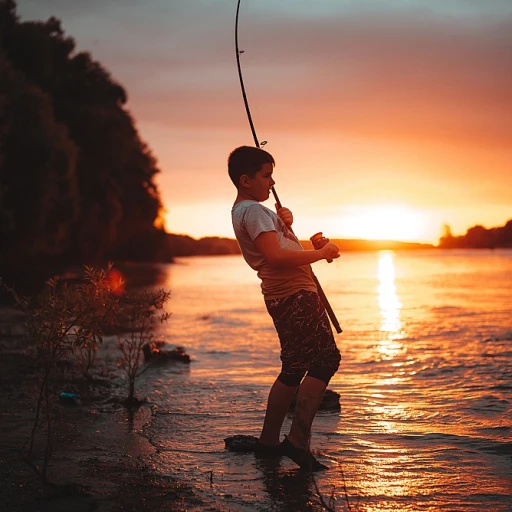
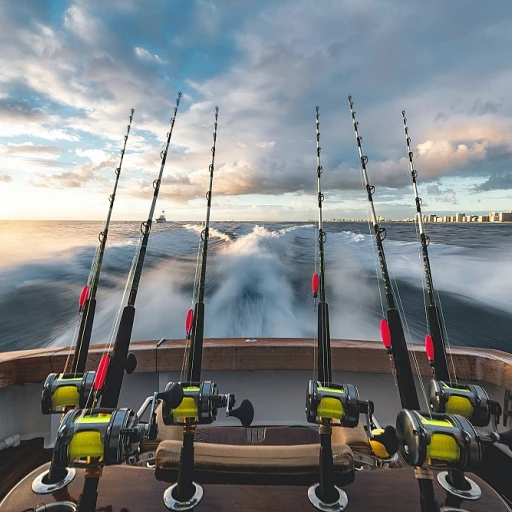
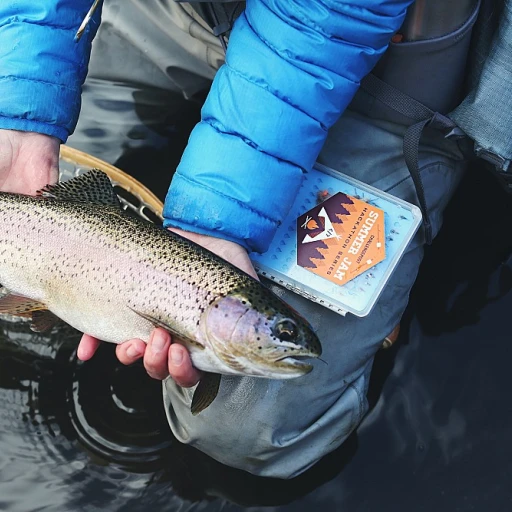
-large-teaser.webp)

